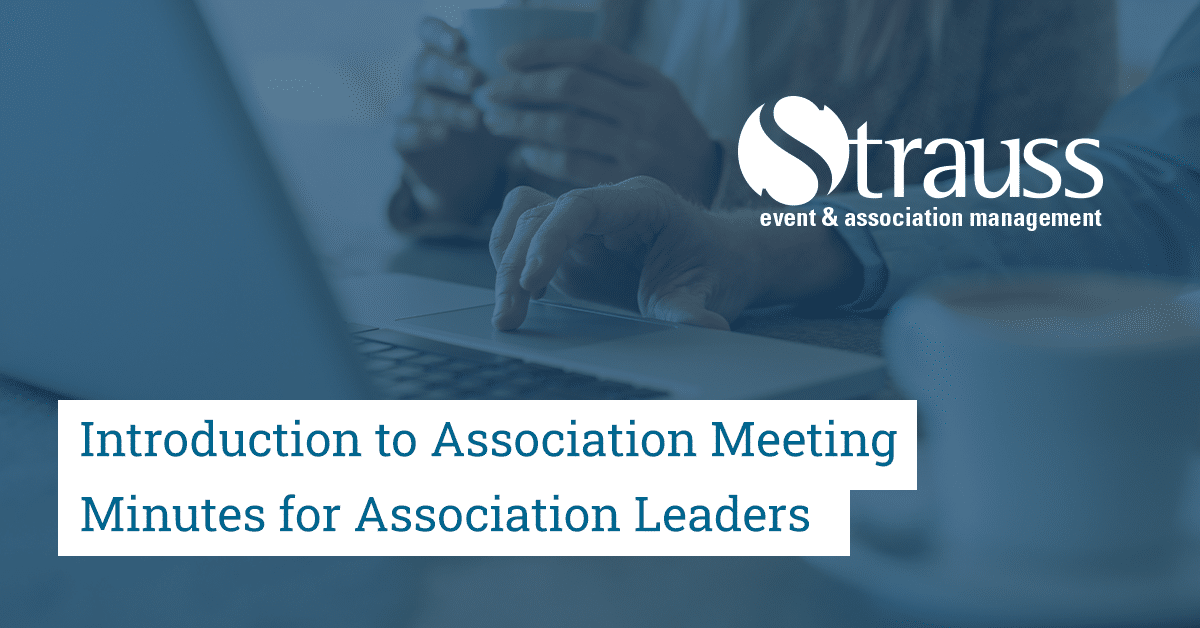For brand new volunteer association leaders, trying to figure out meeting minutes might be intimidating. What are action items? What’s a motion? Do you need to write everything everyone says?
This quick guide will help familiarize yourself with association meeting minutes and write minutes that are efficient, easy to read, and an excellent record for your organization.
What are association meeting minutes?
Meeting minutes are far from a record of everything everyone said in a meeting. Association meeting minutes are a legal record of the decisions of an association. They are essential for protecting the organization and the Board by showing the reasoning behind decisions.
The importance of meeting minutes
Meeting minutes are important for a variety of reasons. Firstly, they are an overview of what has happened in your association throughout any given year. Meeting minutes are a good way to get any new Board member or staff quickly up to speed on what has happened in your association recently. They can also help give any new personnel background into any issues currently being discussed.
Secondly, meeting minutes are required by non-profit law. Board-approved meeting minutes serve as legal record of what occurred at a meeting, and they are admissible as evidence in court.
The structure of association meeting minutes
What to include
Basic meeting minutes for an association should include:
- A record of attendance: who was there and any regrets, and if any attendees left early, the time they left so you know who was present for which decisions.
- Approvals of previous minutes and agenda
- The decision-making process and what decisions were made
- Any actions decided on and who is responsible
- Motions, including who moved the motion, seconder, and if the motion was carried or defeated.
You can also include a summary list of both actions and motions at the end of the minutes document for easy reference later.
What not to include
- Unnecessary detail. You don’t need a record of who said what at every minute. Only write down the decision that was made and major points of a discussion.
- Names only need to be included in the attendance, when noting the mover and seconder of motions, and when noting who is responsible for specific action items. The minutes should represent the decisions of an organization, not individuals.
- Side comments or opinions. Minutes should focus on decisions, not the details, back and forth, or tangents that are often part of meeting discussions.
- Documents or presentations. If anything was included in the meeting materials, there is no need to rewrite the presentation in the meeting minutes. You can simply write something along the lines of “as included in the meeting materials as distributed.”
- How each individual voted on a motion. Instead, simply write the number of votes. For example, “9 in favour, 1 opposed, 1 abstained, carried.” Not everything needs a motion in the minutes, either; some decisions can be handled more formally and some more informally. Refer to the policies and procedures of your association for what kind of decisions might need a motion for your records.
What makes good meeting minutes
Good meeting minutes are concise, to the point, and clearly show the decisions that have been made by the organization. They should be a clear record of how the board acted in the best interests of their association, provided due diligence, fulfilled their duties, and followed the association’s procedures. They should be reviewed by someone else prior to approval and sent out to the board prior to the next meeting for review. Once approved, the minutes should be filed in a way that is easy for your association board of directors and staff to access.

